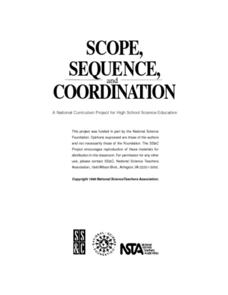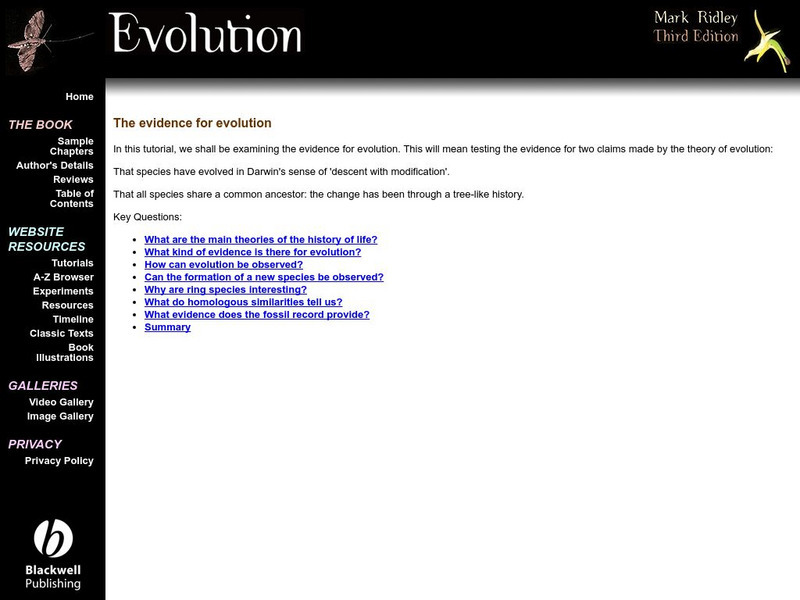Curated OER
Structural Factors in Evolution
Laboratory activities encourage evolutionary biology scholars to consider homologous structures as evidence of common ancestry. They learn how to formulate phylogenic trees and that environment influences to genetic variation. Activities...
Howard Hughes Medical Institute
Visualizing Gene-Expression Patterns
How do genetics gurus know so much about gene expression? See traits materialize before your very eyes using a presentation with embedded simulations. Science scholars develop an understanding of the techniques used to follow the work of...
Curated OER
Evidence of Evolution by Natural Selection
Walk your junior biologists through the evidence that supports evolution. The fossil record, anatomical record, and molecular record are explained and supported by colorful graphs and pictures. Extensive notes are provided for some of...
Curated OER
Evidence for Evolution
In this evidence of evolution worksheet, students review notes given by referring to the Nelson Biology text, chapter 11/13. Students read the notes and the specified pages in the text.
Curated OER
The Theory of Evolution
In this theory of evolution learning exercise, students review vocabulary words associated with evolution including the different types of evolution patters. This learning exercise has 5 true or false and 5 matching questions.
Curated OER
Evolution of Life
For this evolution worksheet, students review the natural selection process and how organisms' adaptations evolve over time. This worksheet has 8 fill in the blank and 11 short answer questions.
Science Education Resource Center at Carleton College
Serc: Comparative Anatomy of Bird vs. Human Leg Bones
This activity is designed for students to compare and contrast the anatomy of bird and human leg bones. Students will kinesthetically model walking like a bird to note the differences in the foot bones.
Other
Plant and Animal Evolution: Homology
In this informative site, homologous is defined and the wings of birds and bats are compared to clarify the concept.
University of California
University of California Museum of Paleontology: Similarities and Differences
A module explaining how two different organisms can possess similar traits by sharing a common ancestor(homology) or due to convergent evolution(analogy).
Soft Schools
Soft Schools: Evolution Quiz
Take this interactive, multiple-choice quiz over evolution, then review your score and any missed questions at the end.
University of California
University of California Museum of Paleontology: Homologies
These pages are from the Understanding Evolution website for teachers. They focus on homologous structures that organisms with common ancestors share.
Other
Evolution: Evidence From Living Organisms
By examining fossils, scientists have collected evidence that supports the theory that species changed over time. As you read this article, study this evidence and critically evaluate whether it indicates that species may have arisen by...
Other
The Evidence for Evolution
These pages are part of a site called "Evolution," that accompanies a textbook by the same name. Mark Ridley is the author, and in this section he discusses the evidence for evolution.
BiologyWise
Biology Wise: Examples of Homologous Structures
Explains what homologous structures are and how they indicate common ancestry between species. Discusses morphological homology, which refers to anatomical and skeletal similarities, and molecular homology, which refers to common...
Sophia Learning
Sophia: Relationships Between Organisms
This lesson will explain how scientists can use homologous structures to identify relationships among different organisms.














